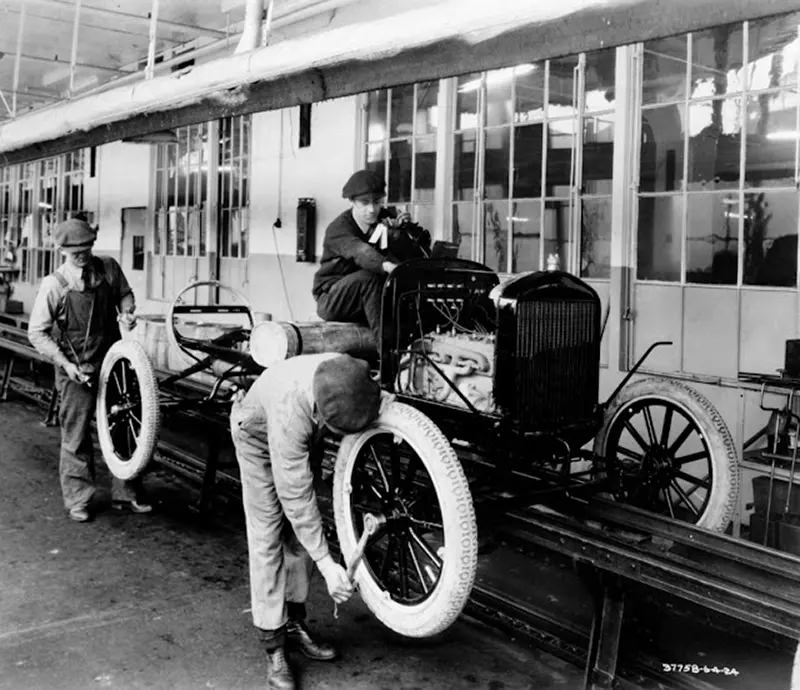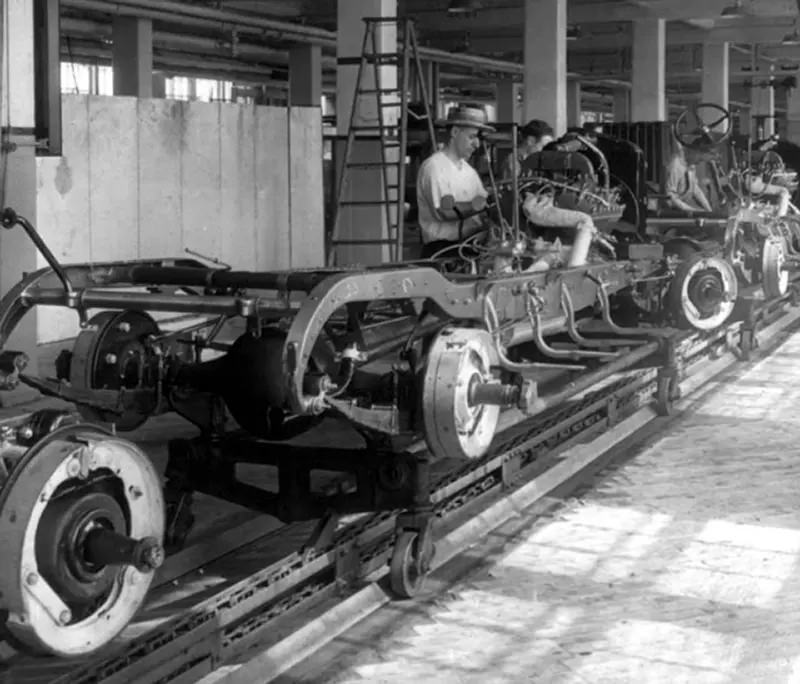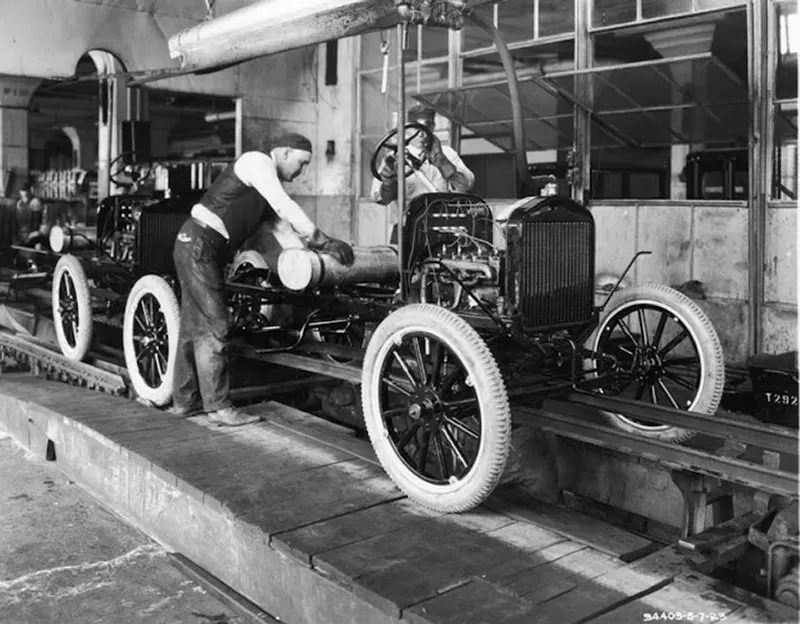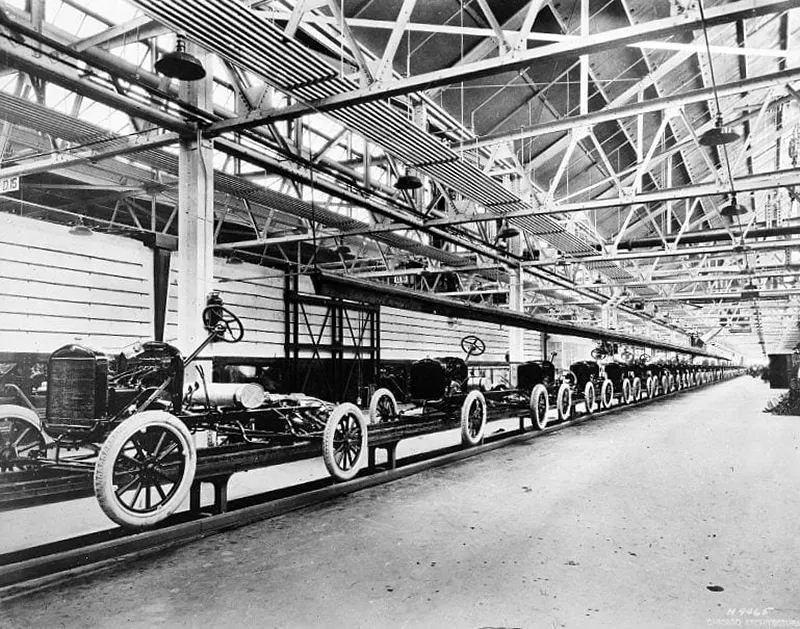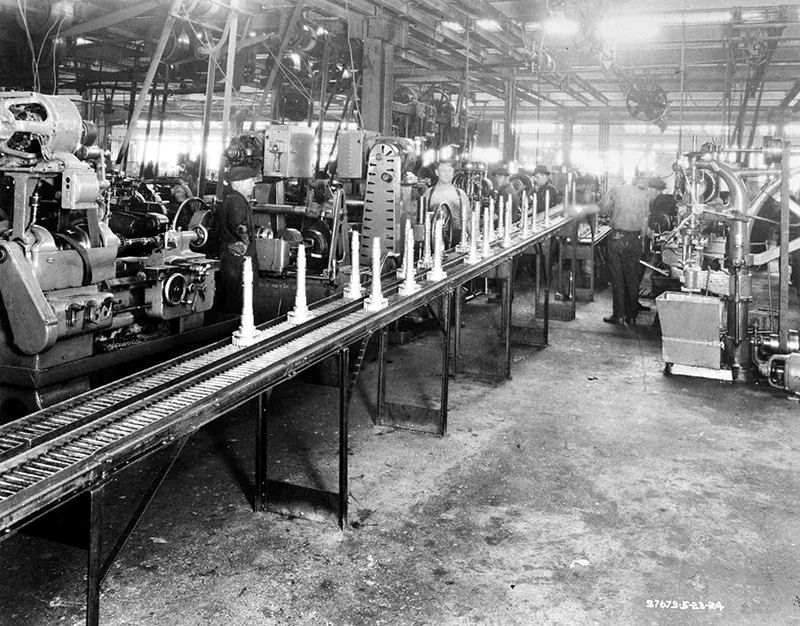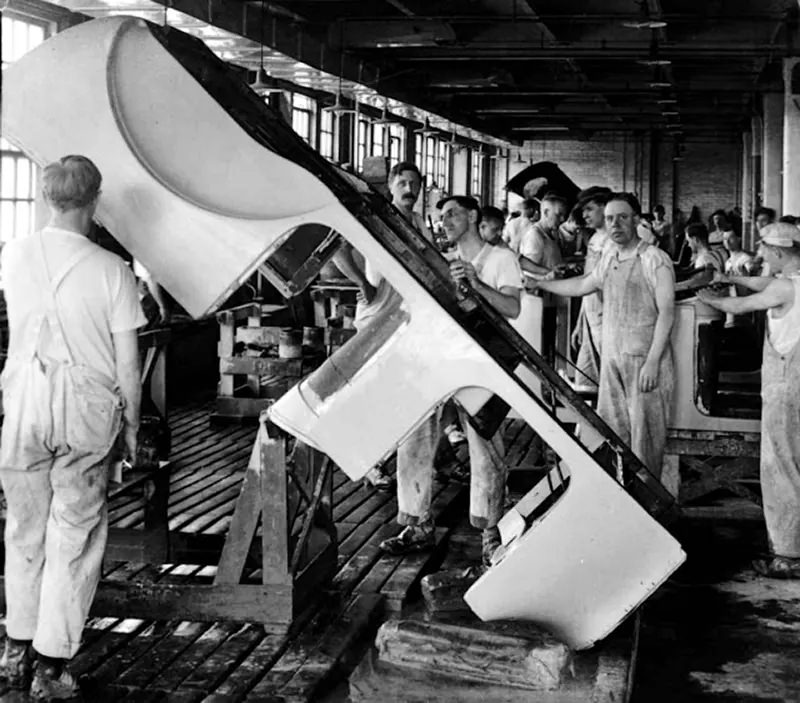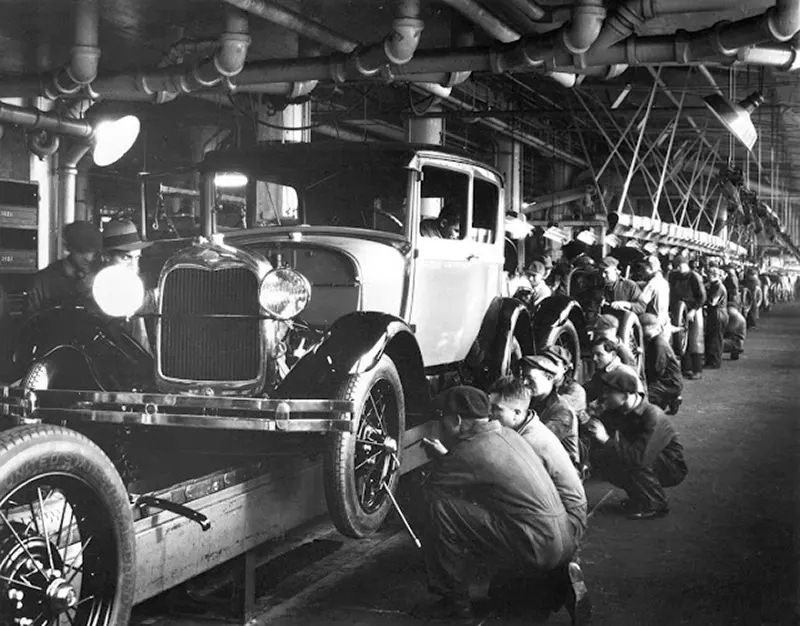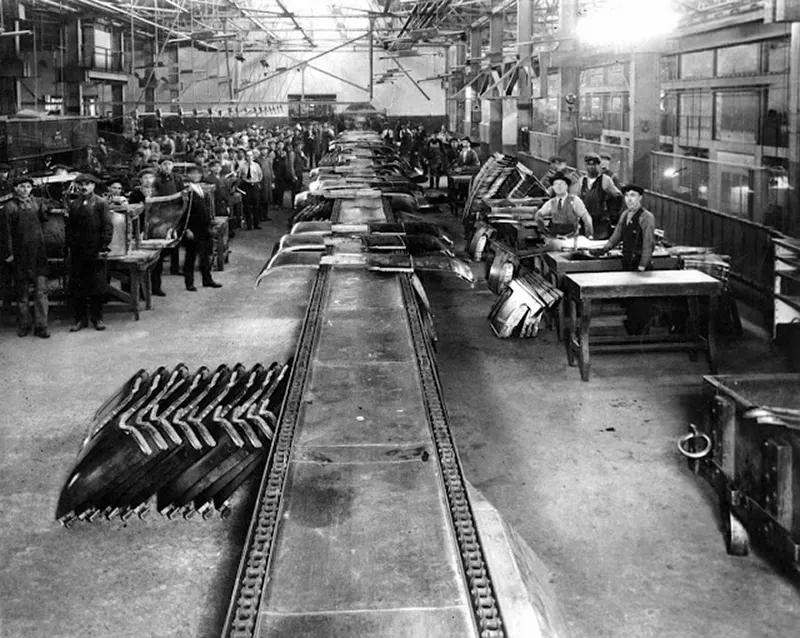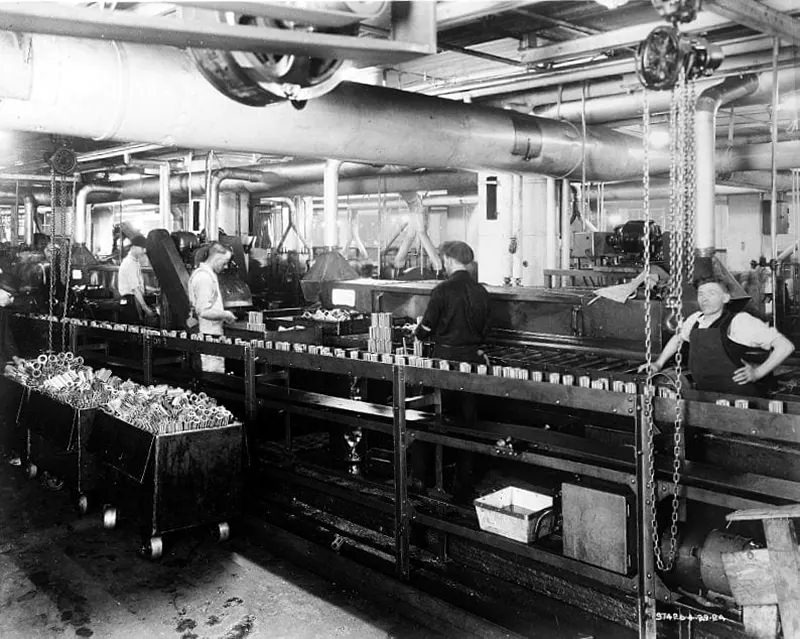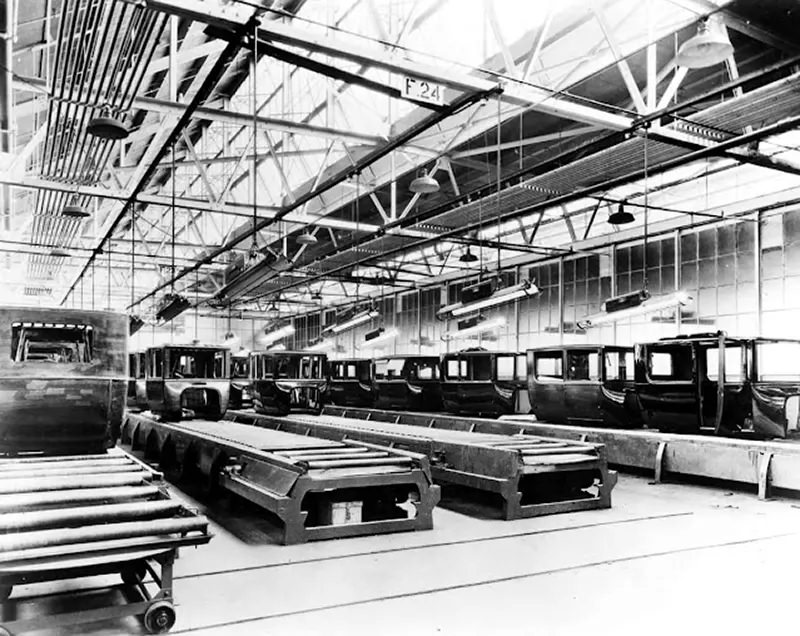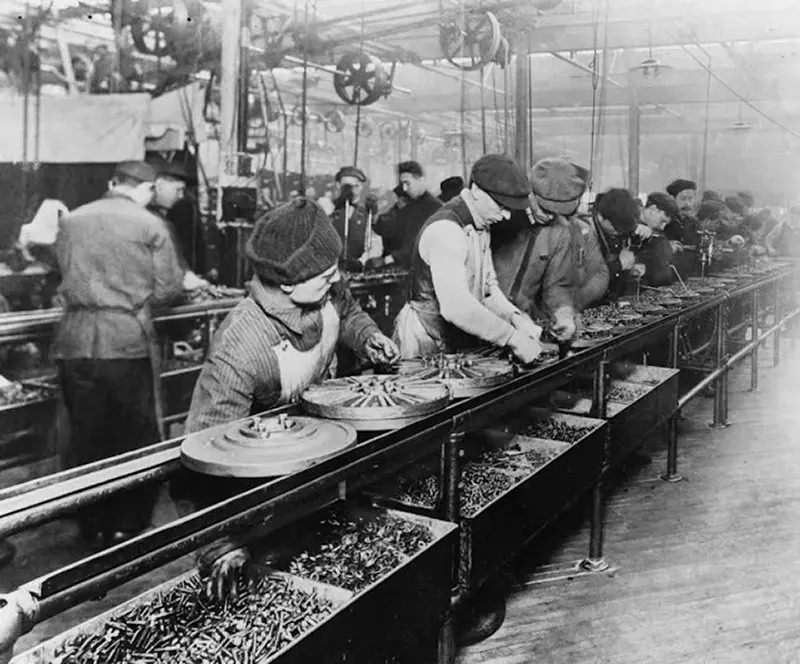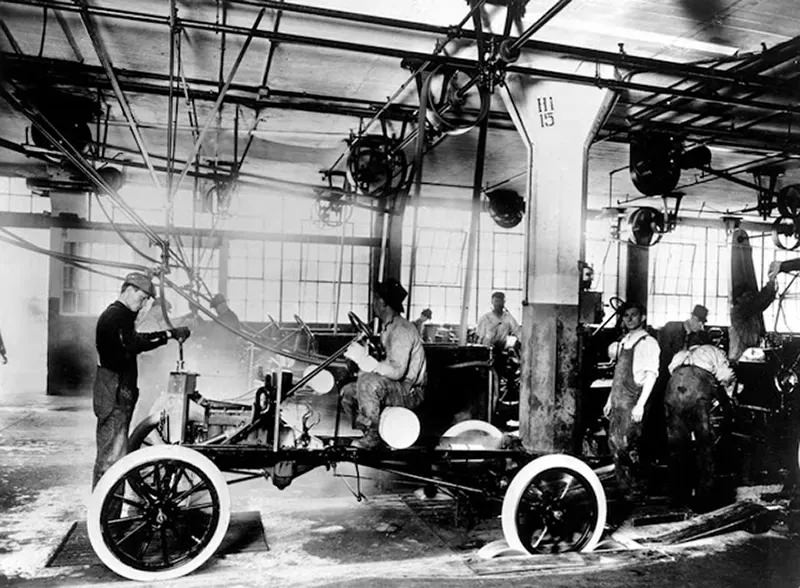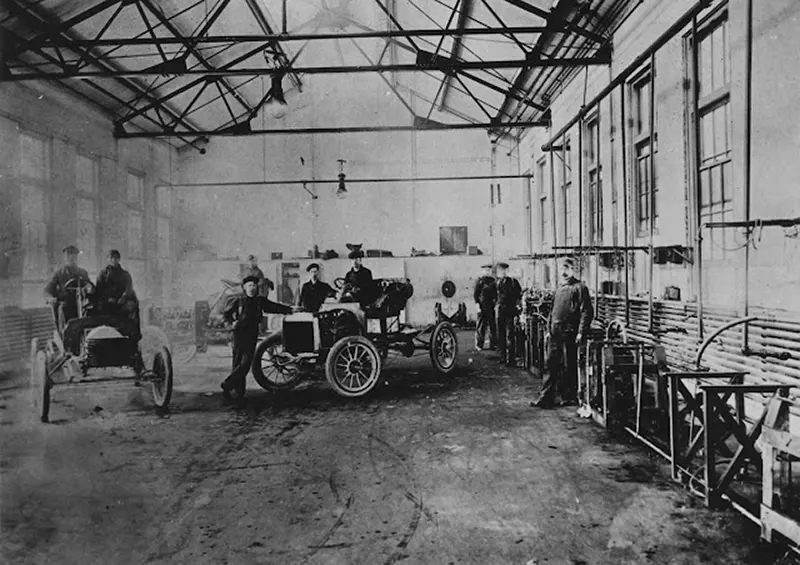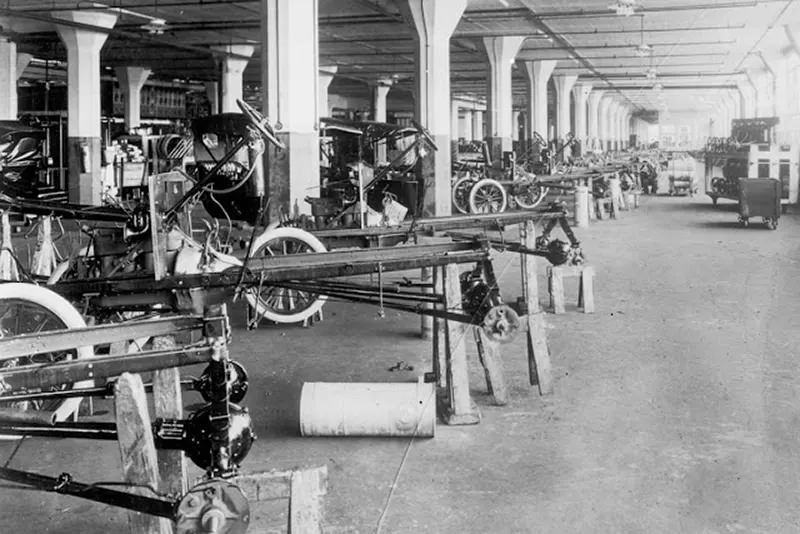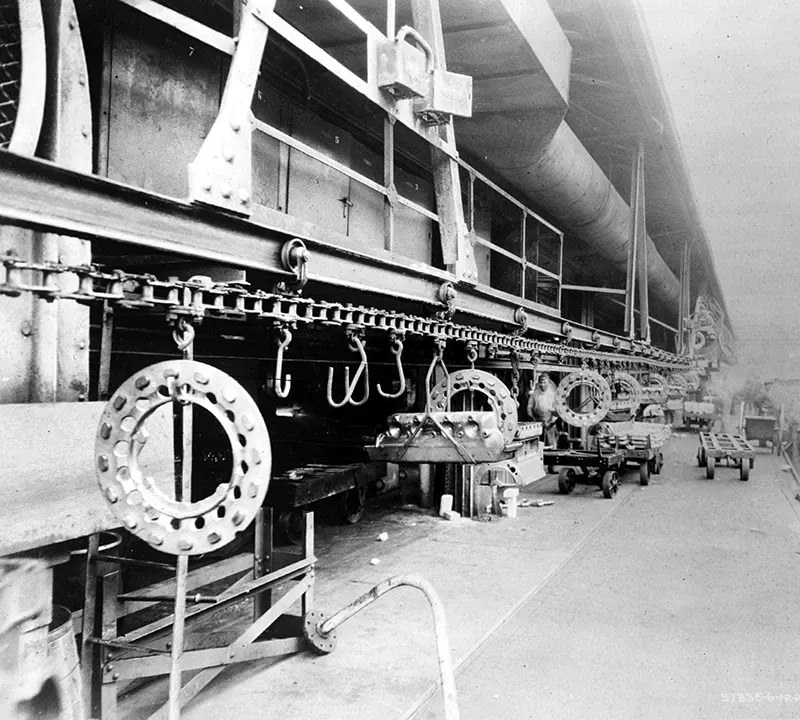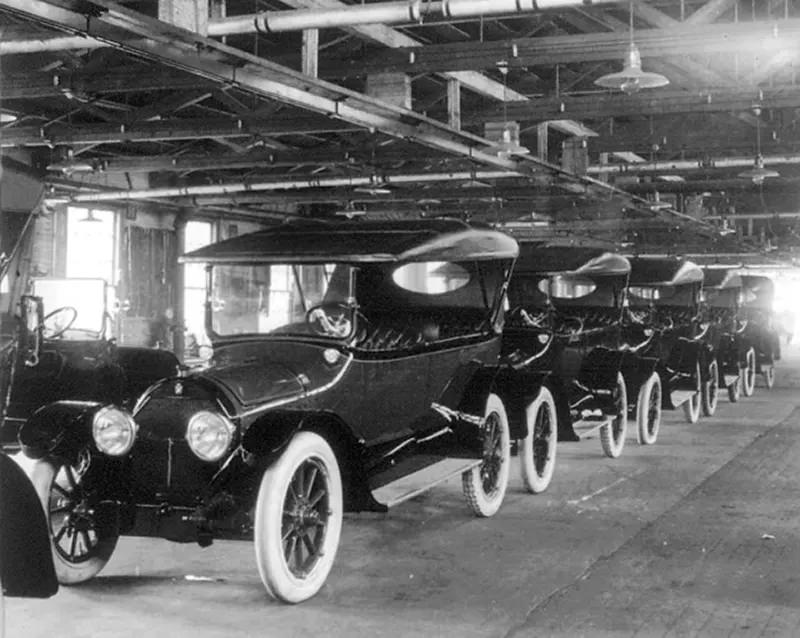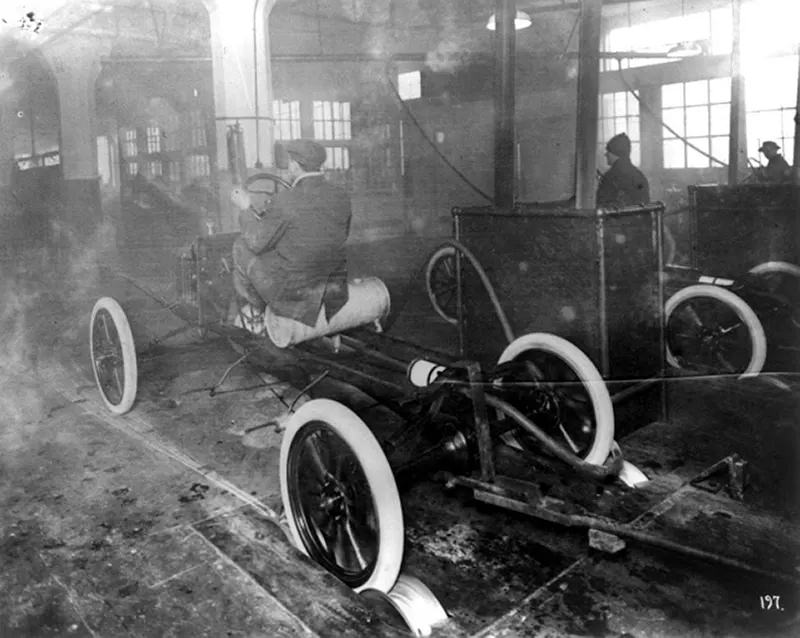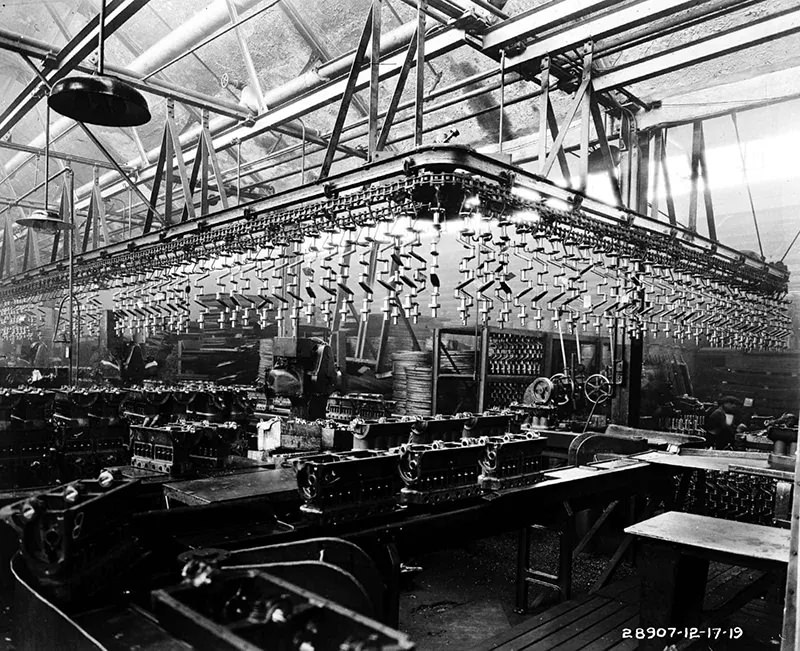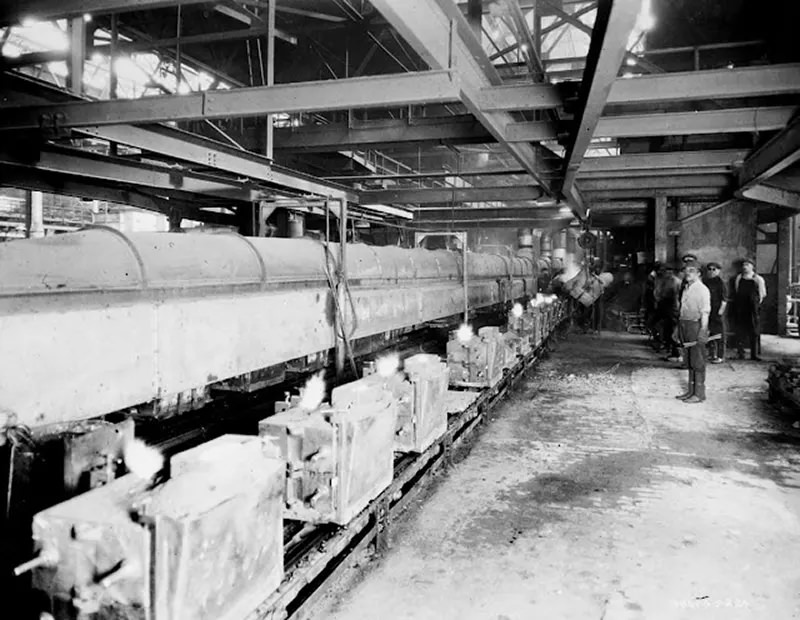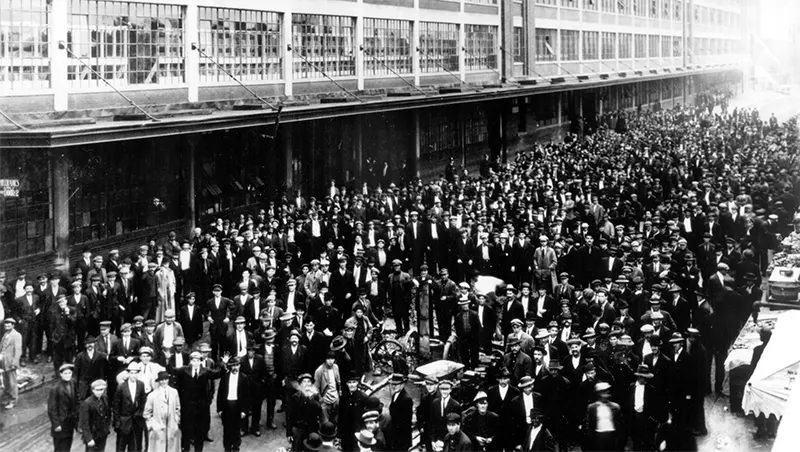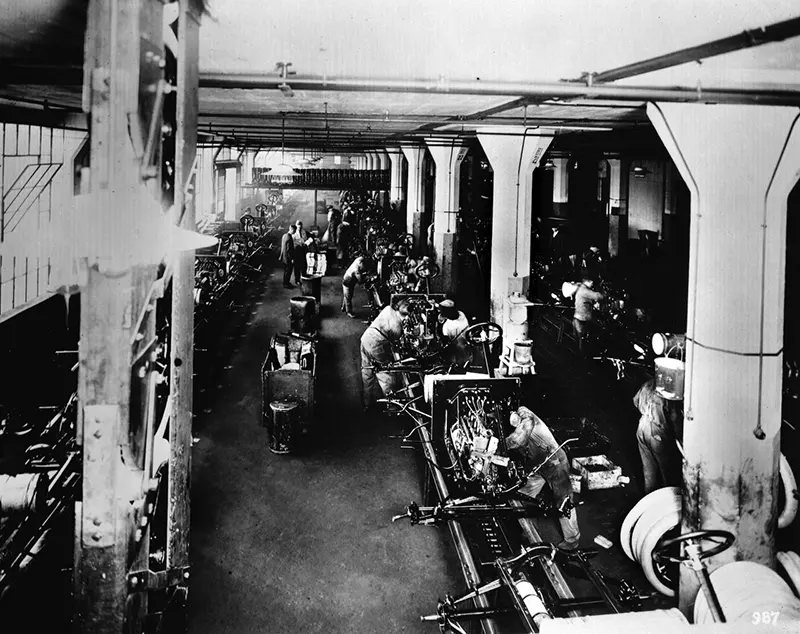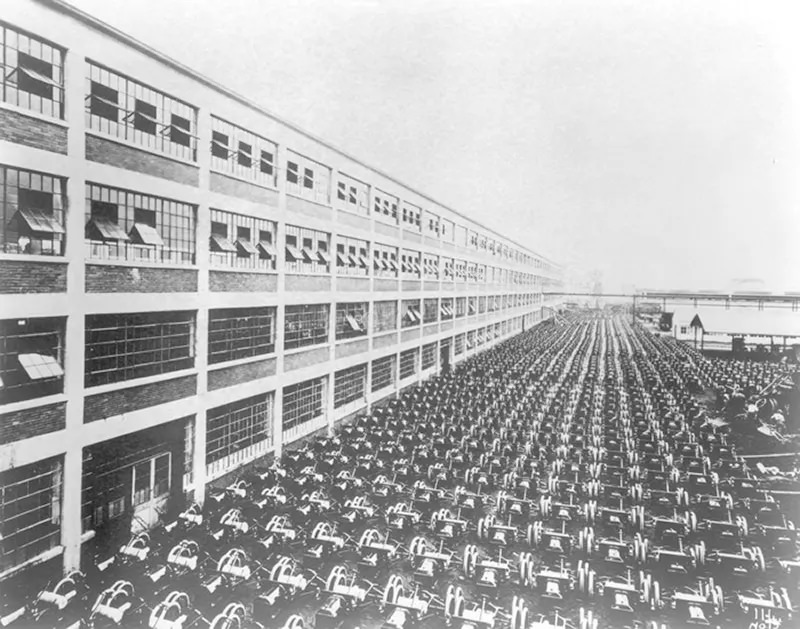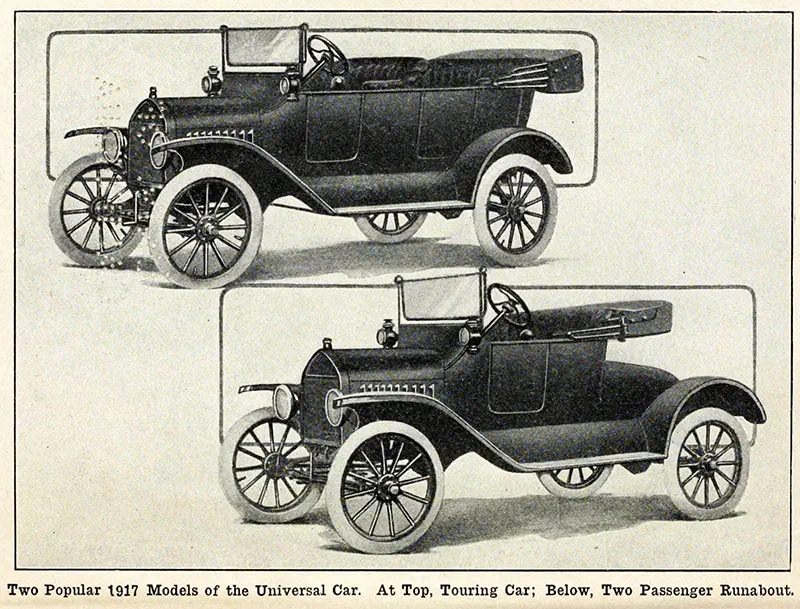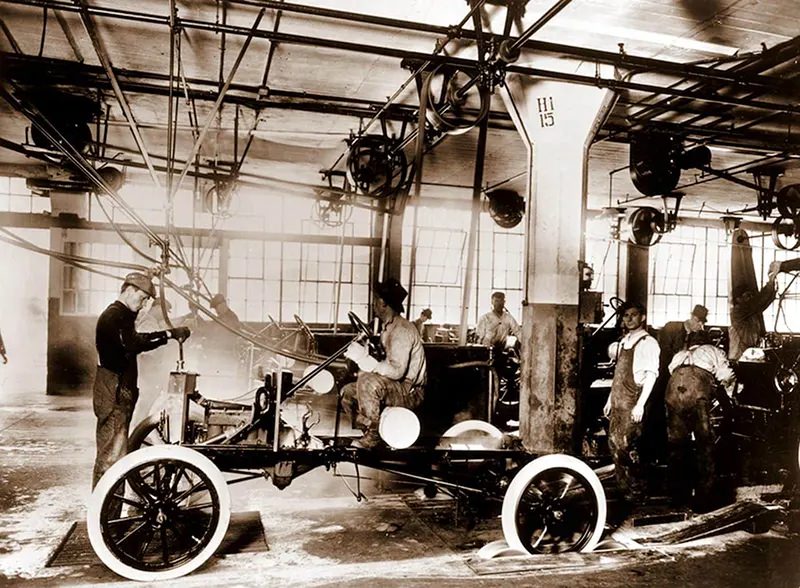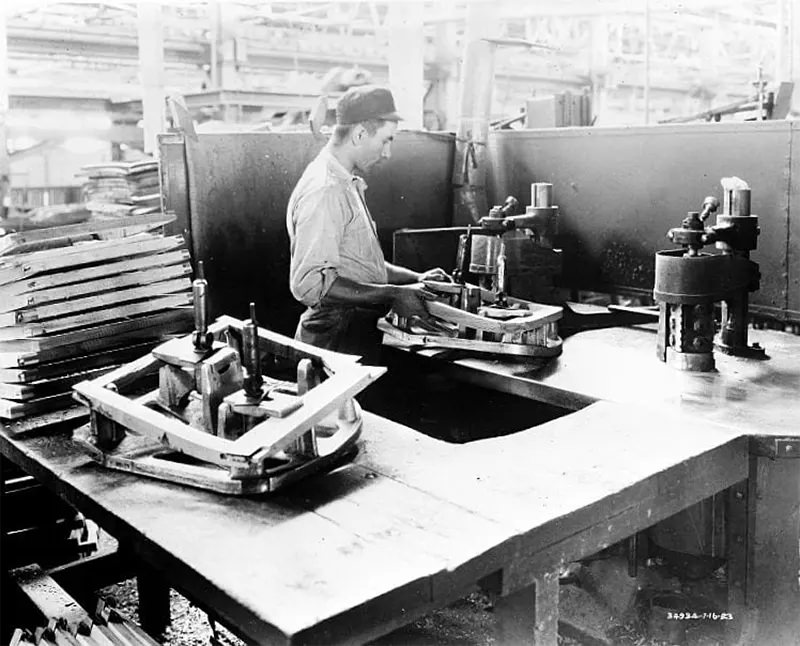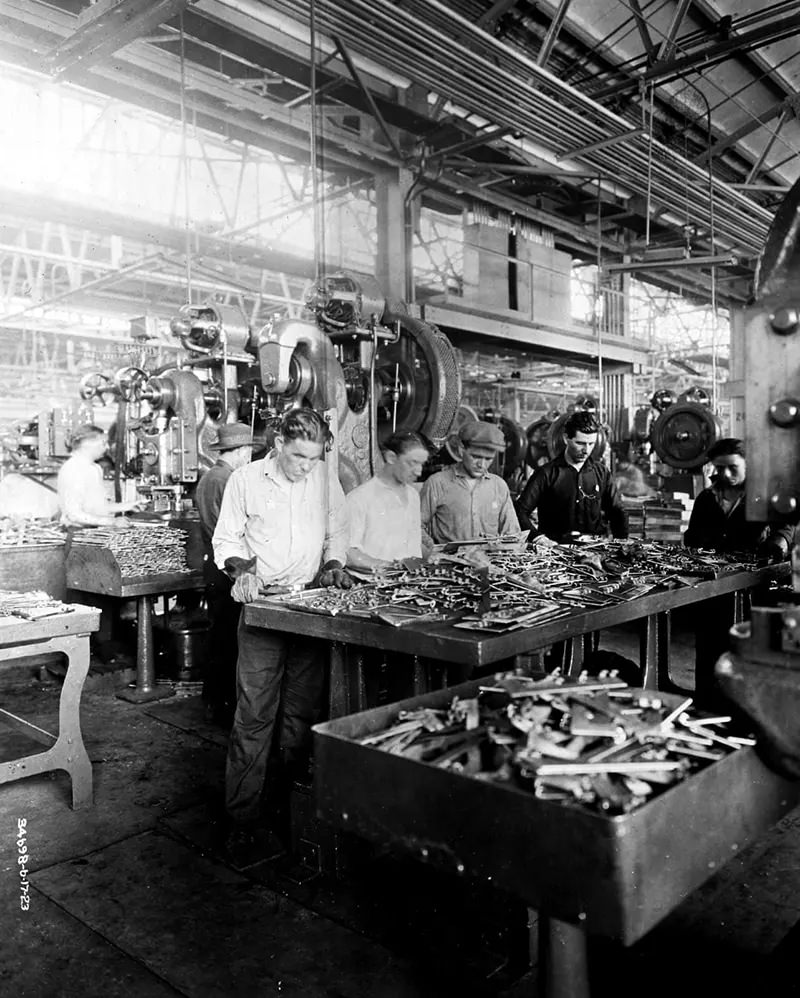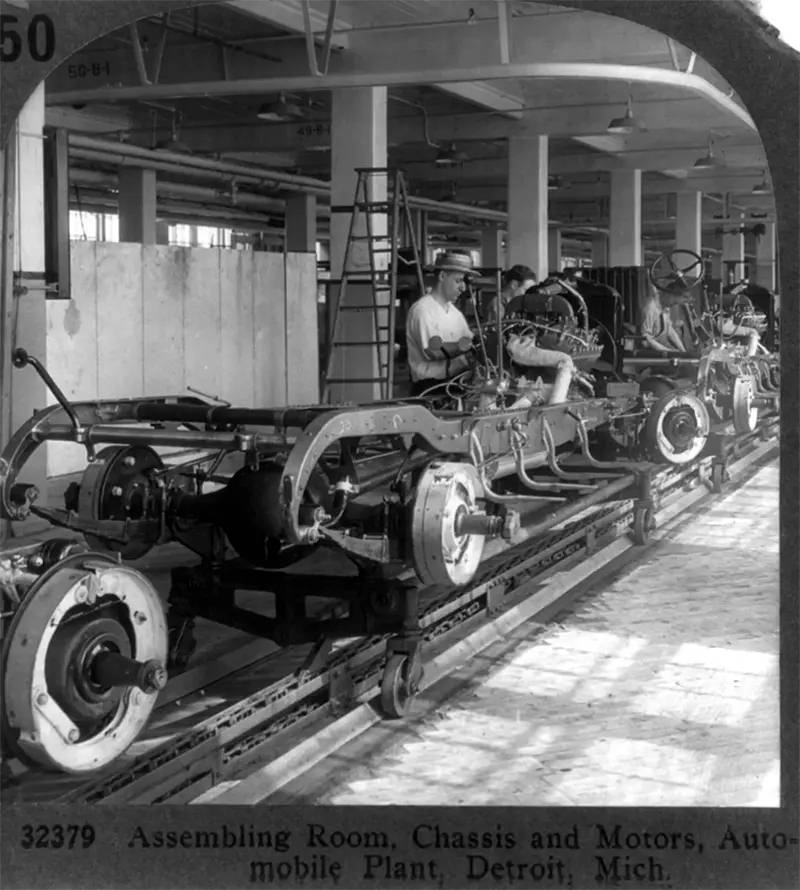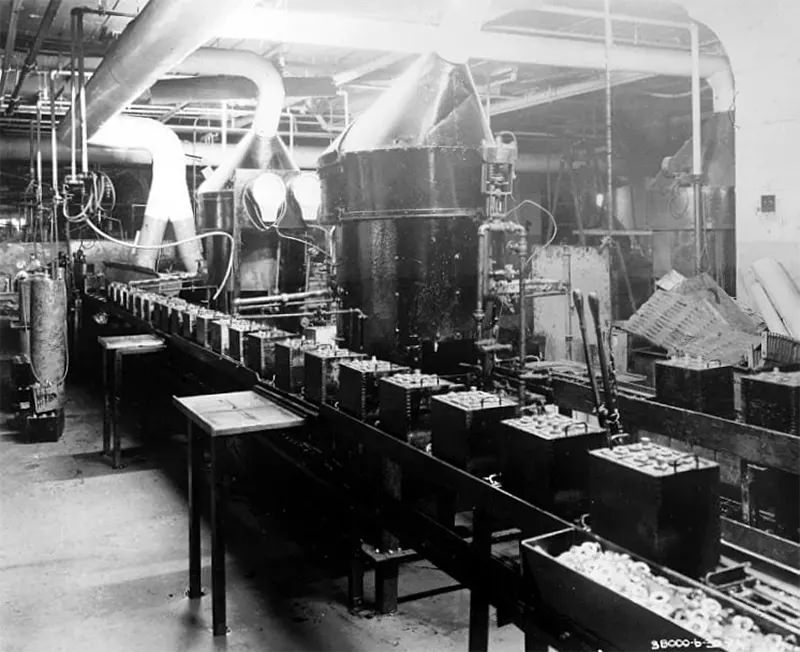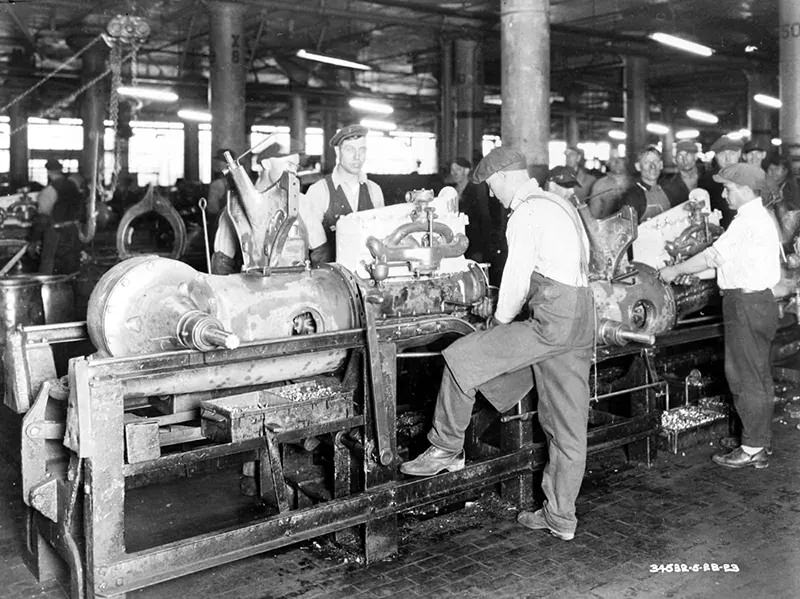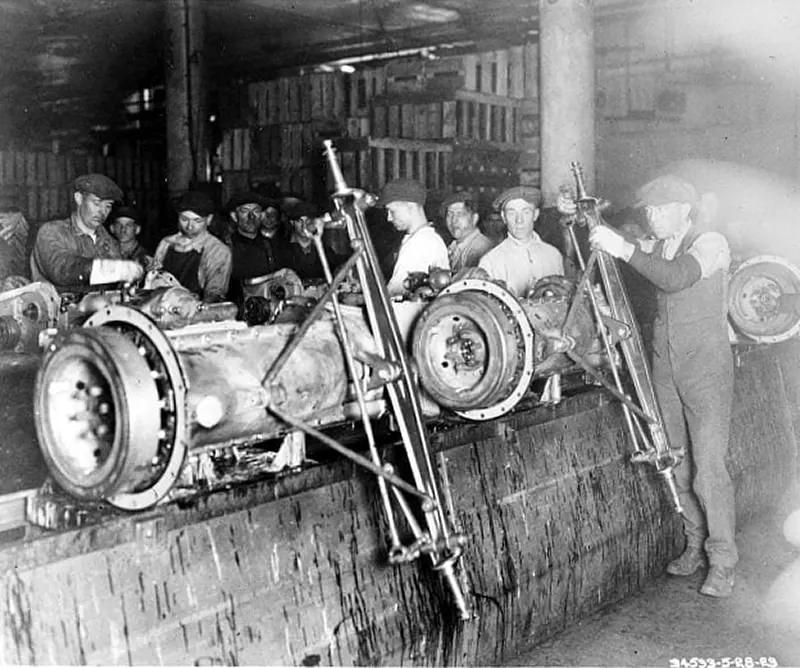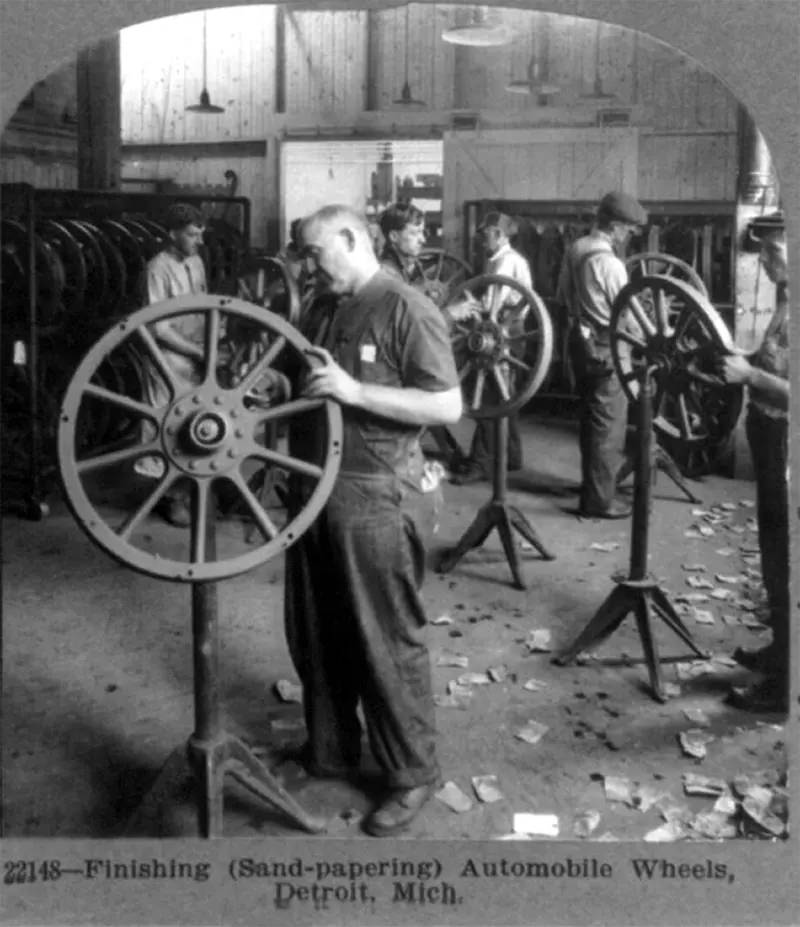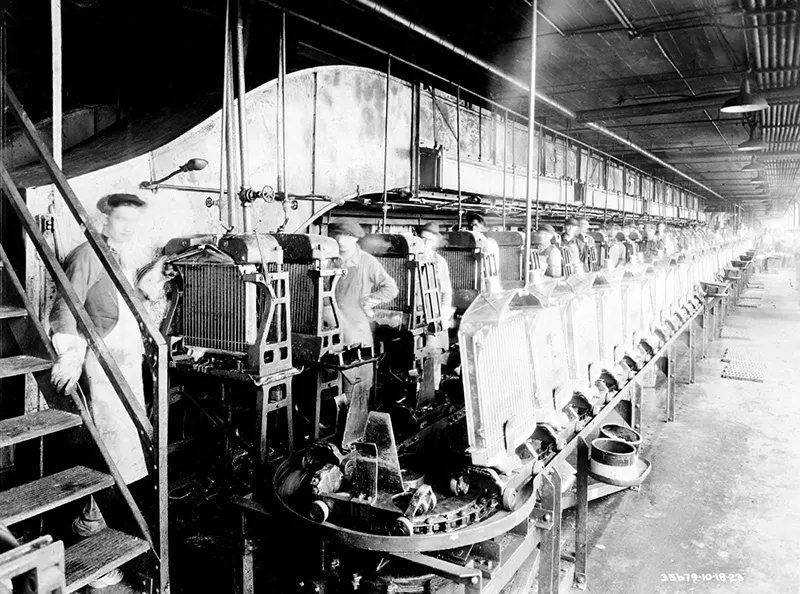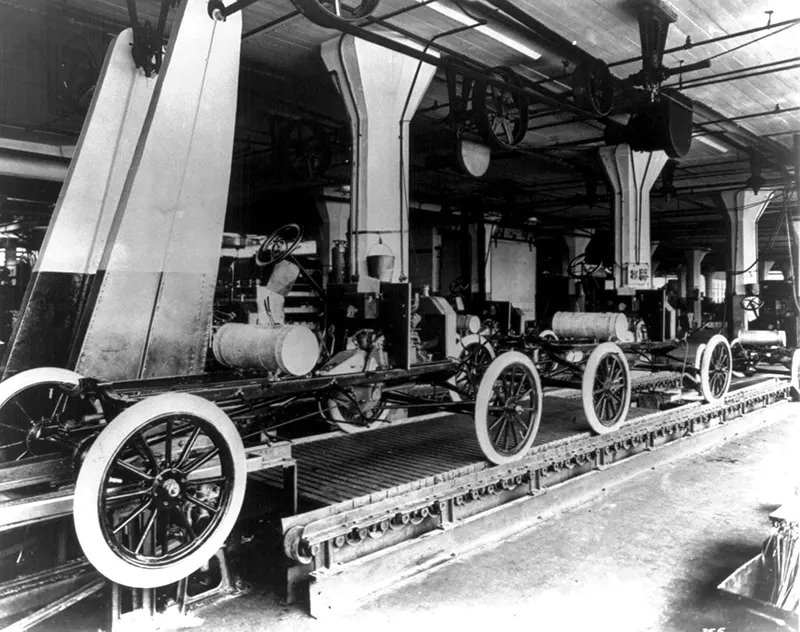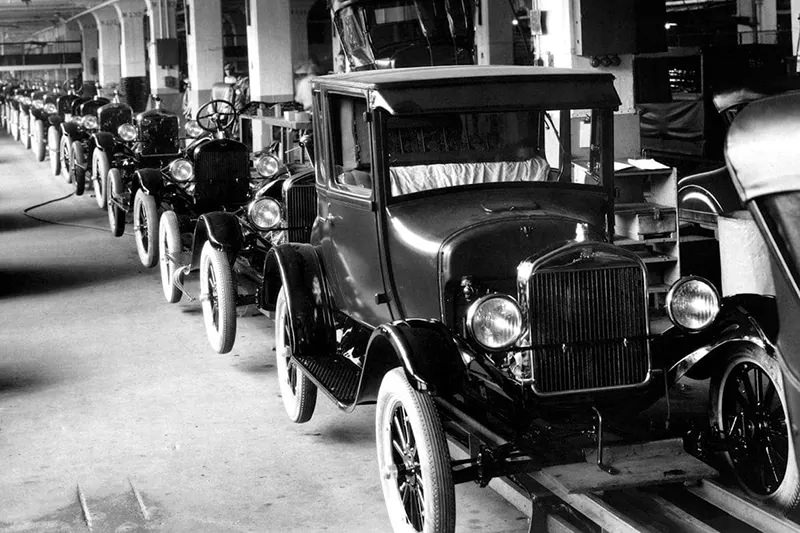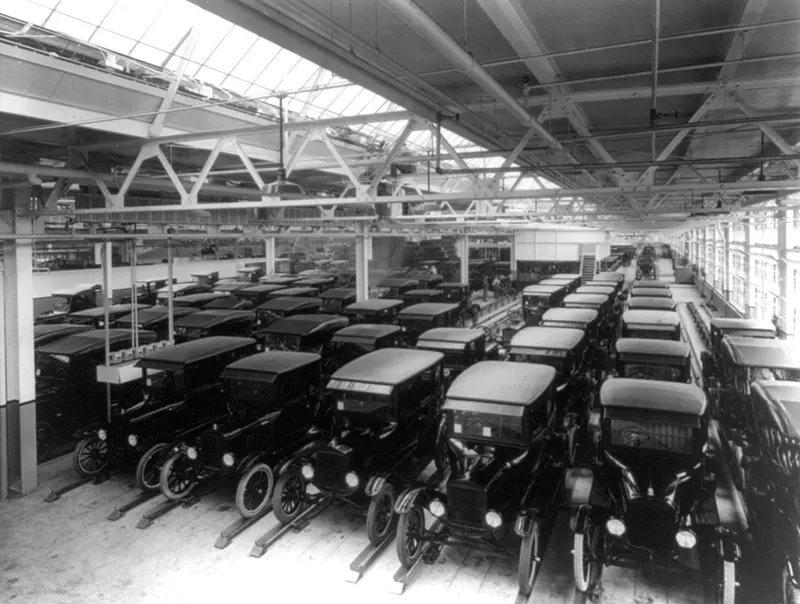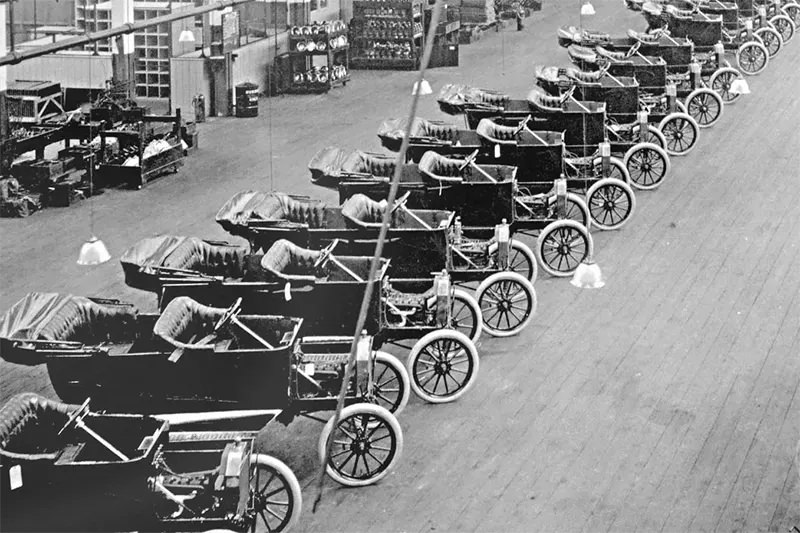The Assembly line mass production of Ford’s Model T cars in the 1910s and 1920s revolutionized the automobile industry. The Model T was the first car designed to be affordable for the average consumer, and the assembly line was a significant factor in making this possible.
The assembly line process for Model T cars began using interchangeable parts. Each component of the car, from the engine to the wheels, was designed to be precisely the same as the next, which made it easy for workers to assemble the cars quickly and efficiently. Using interchangeable parts also made it easy to replace parts if they broke or needed to be repaired.
The assembly line itself was organized in a specific way to maximize efficiency. The line was divided into different stations, each responsible for a particular task. For example, one station might be responsible for assembling the engine, while another station would be responsible for assembling the body.
Workers would stand at each station and perform their specific tasks while the car moved slowly along the assembly line. This allowed the workers to focus on their particular task and allowed them to become experts at it, which increased the speed and quality of the assembly process.
The assembly line process also allowed for specialized tools and machinery. For example, a machine might be used to bend metal for the car’s frame, or a machine might be used to press the wheels onto the axles. This made it possible for the workers to perform their tasks more quickly and accurately than if they had done them by hand. Model T production also significantly impacted the labor force. The assembly line jobs were repetitive and monotonous, required a much smaller skilled workforce, and allowed unskilled workers to be trained in a relatively short period of time. This increased the availability of jobs and reduced the cost of labor.


